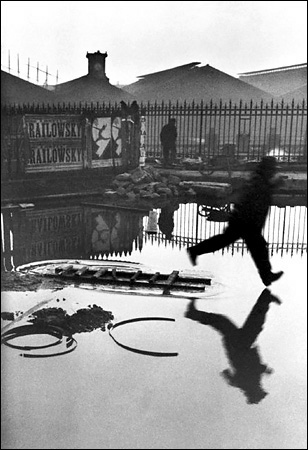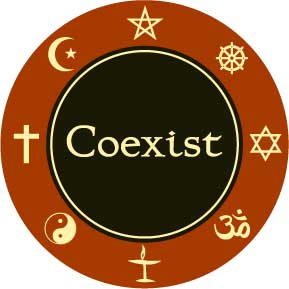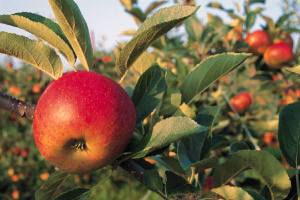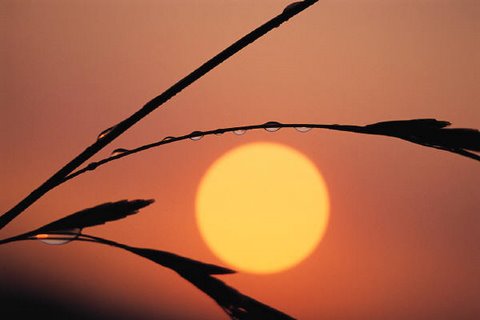A useful site on Hindu teachings presents two analogies.
The first is the ‘drop and the ocean’ analogy in which
The soul is compared to a drop of water and liberation to its merging into the vast ocean which represents the Supreme Soul (God).
According to the advaita schools, the soul and God are equal in every respect, and liberation entails realisation of one’s Godhood. Thus, one’s mistaken sense of individuality is dissolved, and one merges into the all-pervading Supreme.
The second is the ‘green parrot analogy in which
The individual soul is compared to a green bird that enters a green tree (God). It appears to have “merged”, but retains its separate identity.
- The personalistic schools of thought maintain that the soul and God are eternally distinct and that any “merging” is only apparent. “Oneness” in this case refers to:
unity of purpose through loving service realisation of one’s nature as brahman (godly) but maintenance of one’s spiritual individuality.
- Liberation involves entering God’s abode, though many schools teach that those souls who have become free from material contamination are already liberated, even before leaving the material body
The two analogies are to help explain two views’ on the process of attaining ‘moksha’ a freeing or liberation from samsara, the endless round of repeating cycle of birth, life, death and rebirth (reincarnation);
practically all schools consider it a state of unity with God, the nature of such unity is contested. The advaita traditions say that moksha entails annihilation of the soul’s false sense of individuality and realisation of its complete non-difference from God. The dualistic traditions claim that God remains ever distinct from the individual soul. Union in this case refers to a commonality of purpose and realisation of one’s spiritual nature (brahman) through surrender and service to the Supreme Brahman (God).
REINCARNATION and ARE THE TWO VIEWS RESOLVABLE?
Firstly I should say that the conventional understanding doesn’t work for me. Instead I see reincarnation as every moment in which I prompt myself to return to the ‘body of my true Self’, away from any egoistic, lower self, attachment.
Oak trees produce acorns but the don’t become again the acorn from which they grew. Life is progressive in terms of the after-life. But in this world every time we repeat the same ego-driven mistakes we ‘reincarnate’ ourselves into our lower self.
In unitive meditation we merge with the Whole, but not as a co-equal partner with the Godhead – the finite cannot claim to comprehend the Infinite. That which we become at-one with is Creation not the Creator.
On this subject listen to the 8thC Chinese poet known as Li Po;
“The birds have vanished from the sky,
and now the last clouds slip away.
We sit alone, the mountain and I,
until only the mountain remains.”
If the ego is sufficiently quietened for us to be ‘absorbed’ it is a unity with Creation not the Creator.
To the Chinese poet I would add a Baha’i perspective the holds that in the afterlife we commune with souls with whom we have associated;
13. As to the question whether the souls will recognize each other in the spiritual world:
This fact is certain; for the Kingdom is the world of vision where all the concealed realities will
become disclosed. How much more the well-known souls will become manifest. The mysteries
of which man is heedless in this earthly world, those he will discover in the heavenly world, and
here will he be informed of the secret of truth; how much more will he recognize or discover
persons with whom he hath been associated. Undoubtedly, the holy souls who find a pure eye
and are favored with insight will, in the kingdom of lights, be acquainted with all mysteries, and
will seek the bounty of witnessing the reality of every great soul. Even they will manifestly
behold the Beauty of God in that world. Likewise will they find all the friends of God, both those
of the former and recent times, present in the heavenly assemblage.
‘Abdu’l-Bahá: Bahá’í World Faith, p. 367 –
This Baha’i extract is from Dr Bill Huitt’s excellent compilation HERE
IN CONCLUSION
The two views illustrated by ‘the green parrot’ and ‘the drop-ocean’ analogies are resolvable via this perspective. In so far as we mirror the higher Self and quieten the ‘chattering monkey’ of the lower self we attain Moksha, Nirvana, Heaven. This is a moment by moment switching until we are enabled to maintain a more constant connection with the higher Self. Experiences of unity are sublime, ineffable, bliss-full but we are not then at-one with the Godhead, just sufficiently ego-less to feel at-one with the rest of Creation! We get close to God in this limited sense through living a life that obeys the Covenant of eternal verities found in the mystical heart of all great faiths.
From Zen we learn
The great Master Dogen said,
“To study the Buddha Way is to study the self,
to study the self is to forget the self, and
to forget the self is to be enlightened by the ten thousand things.”
To be enlightened by the ten thousand things is to recognize the unity of the self and the ten thousand things.
A limited at-one-ness – through seeking the True Self within – and enjoying endless dualities of this world are the two wings through which we fly spiritually (including spirituality as intellectuallity).
It is certainly true that ‘all is God’ but our reality and our powers are devolved not co-equal.
-0-
Go HERE
to visit the ISKCON site from which I took inspiration for this article.
-0-
Interspirituality, the 21stC version of perennial wisdom, celebrates the Oneness behind the jostling exclusivist-ic world-views!






























